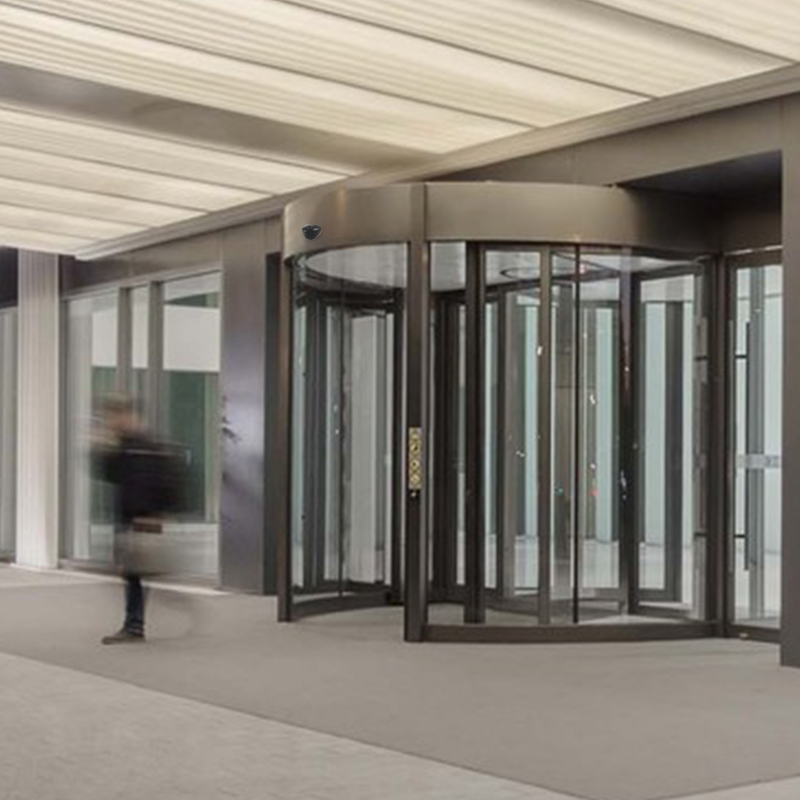Come funziona la tecnologia dei sensori automatici per porte scorrevoli per garantire sicurezza ed efficienza?
Le porte scorrevoli automatiche hanno rivoluzionato il modo in cui interagiamo con gli edifici, offrendo ingressi e uscite senza soluzione di continuità migliorando al contempo l'accessibilità e la convenienza. Al centro di questi sofisticati sistemi sono i sensori automatici delle porte scorrevoli, che svolgono un ruolo fondamentale nel garantire il funzionamento regolare, la sicurezza degli utenti e l'efficienza energetica. Questo articolo approfondisce la tecnologia dietro sensori automatici per porte scorrevoli, facendo luce su come funzionano per rispettare gli standard di sicurezza e ottimizzare le prestazioni delle porte.

Comprendere i sensori automatici delle porte scorrevoli
I sensori automatici delle porte scorrevoli sono dispositivi progettati per rilevare il movimento, la presenza o gli ostacoli nelle vicinanze della porta. Questi sensori fungono da occhi del sistema delle porte, inviando segnali all'unità di controllo per avviare l'apertura, la chiusura o il rilevamento degli ostacoli della porta. Monitorando continuamente l'ambiente circostante, i sensori consentono alle porte scorrevoli automatiche di funzionare in modo efficiente riducendo al minimo il rischio di incidenti o collisioni.
Tipi di sensori automatici delle porte scorrevoli
1. Sensori a infrarossi (IR): i sensori a infrarossi emettono fasci di luce infrarossa e rilevano cambiamenti nella riflessione o interruzioni causati da oggetti in movimento. Quando un individuo si avvicina alla porta, la sua presenza interrompe i raggi infrarossi, innescando l'apertura della porta. I sensori IR sono comunemente utilizzati nelle porte scorrevoli automatiche grazie alla loro affidabilità ed efficacia nel rilevamento del movimento.
2. Sensori a microonde: i sensori a microonde emettono segnali a microonde e misurano il riflesso o lo spostamento Doppler causato da oggetti in movimento. Questi sensori sono sensibili ai cambiamenti di movimento all'interno del loro campo di rilevamento, consentendo loro di rilevare individui o veicoli in avvicinamento con alta precisione. I sensori a microonde sono spesso utilizzati in combinazione con sensori IR per fornire funzionalità di rilevamento aggiuntive.
3. Sensori ad ultrasuoni: i sensori ad ultrasuoni emettono onde sonore ad alta frequenza e misurano il tempo necessario affinché le onde rimbalzino dopo aver colpito oggetti vicini. I cambiamenti nelle onde sonore riflesse indicano la presenza di un ostacolo, inducendo la porta a reagire di conseguenza. I sensori ad ultrasuoni sono particolarmente efficaci nel rilevare ostacoli fissi, come pareti o mobili, e sono comunemente utilizzati nei sistemi automatici di porte scorrevoli.
Come funzionano i sensori automatici delle porte scorrevoli
1. Rilevamento di movimento o presenza: quando un individuo si avvicina a una porta scorrevole automatica, i sensori rilevano la loro presenza o movimento attraverso l'emissione e la ricezione di segnali, come luce infrarossa, segnali a microonde o onde sonore.
2. Elaborazione del segnale: I segnali ricevuti dai sensori vengono elaborati dall'unità di controllo, che analizza i dati per determinare la vicinanza, la velocità e la direzione di movimento dell'oggetto rilevato.
3. Attivazione del funzionamento della porta: Sulla base dell'analisi dei dati del sensore, l'unità di controllo attiva il meccanismo della porta per aprire o chiudere la porta, regolando la velocità e il tempo di funzionamento per garantire un movimento regolare e un passaggio sicuro.
4. Rilevamento di ostacoli: se viene rilevato un ostacolo nel percorso della porta, i sensori segnalano all'unità di controllo di arrestare il movimento della porta o invertirne la direzione per prevenire collisioni e garantire la sicurezza dell'utente.
Garantire sicurezza ed efficienza
I sensori automatici delle porte scorrevoli svolgono un ruolo cruciale nel rispetto degli standard di sicurezza e nell'ottimizzazione delle prestazioni delle porte in vari modi:
Prevenire collisioni: monitorando continuamente l'ambiente circostante, i sensori rilevano ostacoli o si avvicinano alle persone, consentendo alla porta di reagire prontamente per prevenire collisioni o incidenti.
p>Migliorare l'accessibilità: le porte scorrevoli automatiche dotate di sensori offrono ingressi e uscite senza soluzione di continuità per persone con disabilità o mobilità limitata, promuovendo inclusività e accessibilità negli spazi pubblici.
Ottimizzazione dell'efficienza energetica: i sensori aiutano a ridurre al minimo il consumo energetico attivando il funzionamento della porta solo quando necessario, riducendo la perdita o il guadagno di calore e migliorando il controllo del clima interno.
Semplificazione del flusso di traffico: facilitando il funzionamento regolare ed efficiente delle porte, i sensori contribuiscono al flusso continuo del traffico pedonale, in particolare nelle aree ad alto traffico come aeroporti, centri commerciali e ospedali.
Conclusione
La tecnologia dietro i sensori automatici delle porte scorrevoli rappresenta una convergenza di innovazione, sicurezza ed efficienza. Sfruttando le capacità delle tecnologie di rilevamento a infrarossi, microonde o ultrasonico, questi sensori consentono alle porte scorrevoli automatiche di funzionare senza soluzione di continuità, dando priorità alla sicurezza e al comfort dell'utente. Mentre la tecnologia continua ad evolversi, i sistemi automatici di porte scorrevoli diventeranno senza dubbio ancora più sofisticati, offrendo funzionalità e capacità avanzate per soddisfare le esigenze in continua evoluzione degli edifici e delle infrastrutture moderne.







